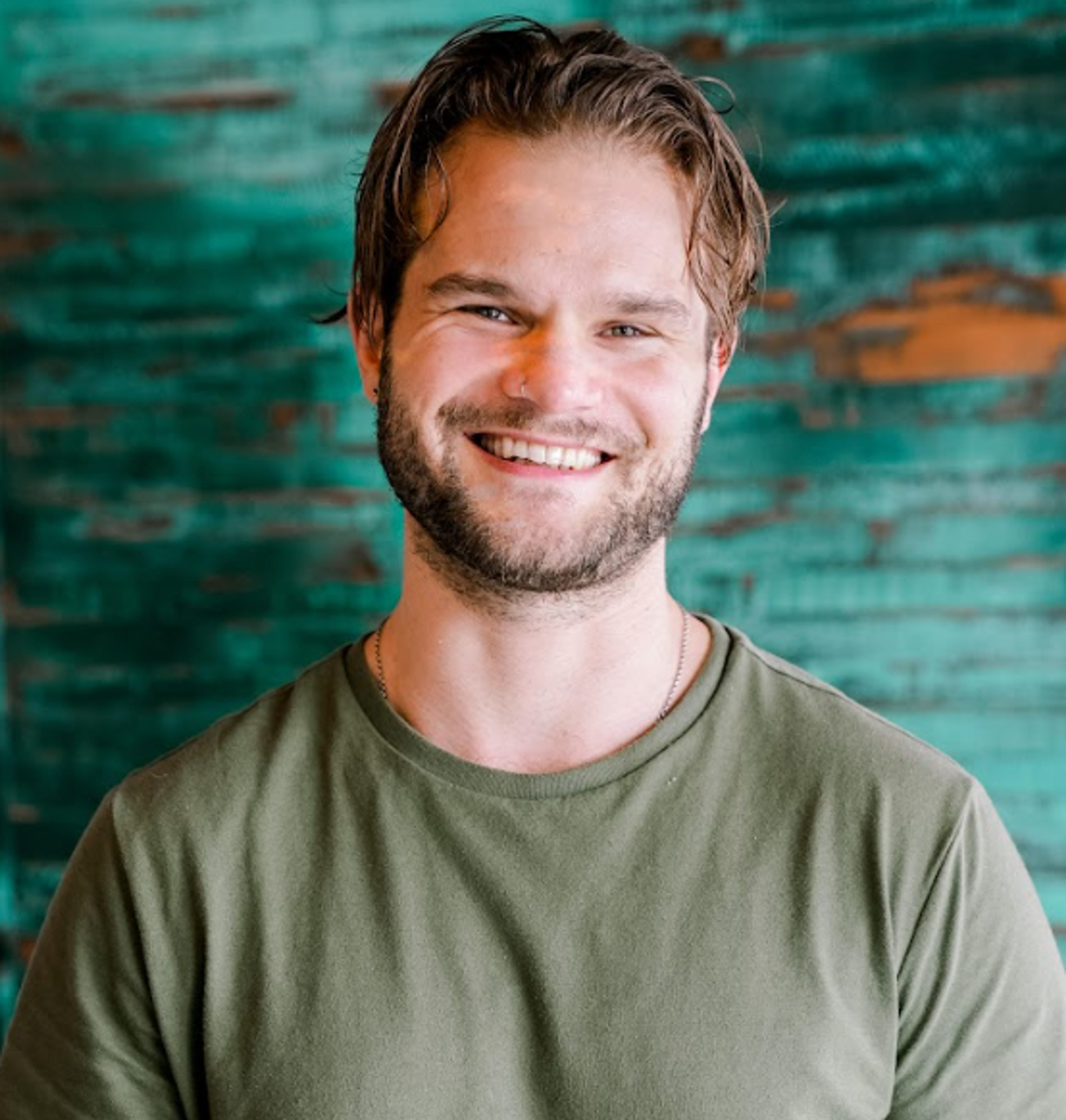


When Equip Peer Mentor Elizabeth Moscoso was first diagnosed with an eating disorder, she felt immense relief. Finally, Moscoso says she had the language to describe what she had been experiencing for so long. “As I began treatment and started to understand the magnitude of work that lay ahead of me, I realized that I wanted to fast forward to the part of my life when I had already recovered,” she says. “I didn't want to go through the nitty gritty of it all.”
Looking back now, Moscoso says she continued to cling to parts of her eating disorder, even as she committed to treatment. “I would make progress one week, and then the next week, the fear of my body rapidly changing and the uncertainty of what recovery would look like for me would send me right back into eating disorder behavior,” she says. “I was caught in this loop of motivation to finally give recovery an earnest go in one moment, and the comfort of the familiar yet harmful eating disorder the next.”
Equip Peer Mentor Kelsey Gilchriest had a similar experience after she completed a treatment program for avoidant/restrictive food intake disorder (ARFID), struggling to find adequate post-treatment support and remain committed to recovery. “I had a tough time with the definition of recovery that I had learned in treatment, and felt intense shame when I struggled with eating disorder urges or behaviors,” Gilchriest says. “My expectation was that once I was discharged from treatment, I would leave the eating disorder in the past. My shame really kept me stuck at times, and with it came fears that I would never reach ‘true recovery.’ What I've learned is that recovery is not the absence of struggle, but how we handle that struggle.”
The reality is that this type of experience—two steps forward, one step back (or sometimes two steps back)—is more the rule than the exception when it comes to eating disorder recovery. While many might assume that once someone has been diagnosed and begins treatment, it kicks off a clear, one-way path to lifelong recovery, the journey is rarely that straightforward. Read on to learn why eating disorder recovery is often non-linear, what that really means, and why it’s totally okay.
The myth of linear recovery
People often picture the road to recovery as a straight line—and that misunderstanding is rooted in how we’ve been taught to think about forward progress. When you think back to middle school math, a linear line on a graph cuts clean across the grid: straight, consistent, unwavering. In the context of recovery, linear implies consistent movement towards behaviors in line with recovery and away from behaviors in line with an eating disorder. In other words, once you start working on recovery, you should have decreased symptoms and behaviors, and get closer to your goals every day. "’Linear’ refers to something that moves in a straight line—up, or forward—with no breaks,” says Equip Therapy Lead Jonathan Levine, LCSW. “If recovery were linear, there would be no moments of feeling stagnant or feeling like you're going backwards.”
However, Levine is clear that eating disorder recovery is not linear for the vast majority of people for two main reasons:
- Human nature
- The fact that eating disorders are good at protecting themselves, and recovery is challenging
“Any change in behavior, like trying to go to sleep earlier, spending less money at restaurants, or implementing a meditation routine, are difficult because they require an ongoing shift in our day-to-day routines,” he says “And we are, if nothing else, creatures of habit—the more we do something, the harder it is to stop doing that thing, even if we want to. So when you factor in human nature with how powerful eating disorders are, how they subtly dominate so many pieces of our daily routines—especially those outside of meal times—it makes sense that recovery would be difficult, would take time, and that someone wouldn’t see immediate and ongoing improvement every day from the moment they decide they want to recover. That's an unrealistic expectation.”
For Moscoso, the challenges of diet culture contributed to and amplified the ups and downs of her treatment journey. “It's extremely hard work to change neural pathways so that you can build new ones that aren't eating disorder-driven,” she says. “My recovery wasn't linear due to not only the eating disorder thoughts and behaviors, but also the fears of recovering in a society that praises thinness and restriction. It was hard to imagine ever feeling happy in recovery when, culturally, we’re given subtle and not so subtle messages that in order to find joy, success, love, acceptance, and ‘health,’ I would have to do the very things that were keeping my eating disorder in place.”
Sometimes, unrealistic expectations of what recovery might look like—consistent, solid, forward-moving—can lead to a sense of failure, making any setbacks harder to accept, and harder to bounce back from. “When my recovery ended up looking like a bit of a squiggly mess rather than a straight line, I blamed myself,” Gilchriest says. “I thought it was my fault that I couldn't maintain perfection. I think we, as a society, often expect perfection. And when going through something difficult, like eating disorder recovery, we tend to expect or hope that it will be like climbing up a mountain; difficult, but slow and steady. So when we feel like we've been stuck on a steep cliffside or blown off the mountain entirely, we think it's our fault. Eating disorders often thrive in shame, so when we struggle our eating disorder says, ‘See? I knew you couldn't do it,’ when in reality, those struggles are to be expected. Plot twist: perfection is unattainable!”
What recovery really looks like
While linear progress may seem ideal, the reality is far more complicated. Research has shown that eating disorders are highly recurrent in nature, with high rates of relapse. On average, relapse rates over a 10-year-period were shown to be approximately 40–50% for anorexia, 40% for other specified feeding and eating disorder (OSFED), and 30% for bulimia and binge eating disorder (BED). Despite these numbers, it’s important to remember that with the right support and treatment approach, lasting recovery is possible for everyone affected by an eating disorder—but the journey there may not be direct.
Gilchriest says she wishes someone had sat her down at the start of her treatment journey to explain what recovery might realistically resemble. “I don't think that I would've been quite so hard on myself for struggling had I known what the true expectation of recovery is,” she says.
Moscoso understands why those who haven’t experienced an eating disorder might not fully understand the overwhelming power these illnesses can have over a person’s life, or why recovery can’t be faster and more straightforward. “It's hard to see loved ones being challenged multiple times a day for weeks, months, or years on end, and it's completely understandable to wish for recovery to be a straight line, with no periods of stagnation or lapses,” she says. “In reality, it takes a lot of learning, through both the ups and downs of recovery, to build up coping skills and resilience against the eating disorder.”
To her point, Moscoso says that if recovery were easy, there wouldn’t be a need for all the specialists, treatment programs, and levels of care devoted to helping people recover. “I think about it like learning to rollerblade,” she says. “In treatment, we are asking you to let go of the safety of holding on to the rails of the eating disorder and learn to move freely without going back to the rails. Your providers are the safety pads there meant to keep you safe as you move towards that freedom, but it would be unrealistic for you not to fall as you're learning new skills, right?”
How—and why—to keep going in recovery
No two recovery journeys are identical—and that’s not only okay, but expected. “Recovery looks different for everyone, so it's important to be curious, vigilant, and honest with yourself—and your support system—to best understand if you're moving in the direction you want to be,” Levine advises. “I recommend paying close attention to your behaviors, because those will show you how you're literally acting versus what you are saying or thinking.”
Levine also underscores the point that taking two steps forward and one step back is the expectation, so a bad day or a bad week doesn't necessarily indicate a lack of improvement. “What's most important is how you respond to a bad moment/day/week/month: do you give yourself grace to be imperfect and continue trying?” he says. “Or do you fall into an all-or-nothing thinking pattern, and say, ‘screw recovery, there's no point now that I've had a low spell?’ Consistency is key, because motivation and discipline will wax and wane. Finding a way to not give up during the hardest moments is critical.”
Moscoso says she would invite those who feel they aren't progressing in eating disorder treatment to find the subtle ways in which they actually have made progress, and to remember that each tiny step is meaningful. “Maybe they are more open to joining a group after weeks of strongly opposing it—that's progress,” she says. “Maybe they are eating a snack that they wouldn't even imagine being able to eat a month ago—that's a win! Maybe they are attending provider sessions when they really don't feel like it. Those are things not to be discounted.”
“For folks who fear they are taking steps backward, I understand how stressful and confusing that can be, and even if those fears aren't based in reality, I would strongly recommend letting someone know, whether that's a trusted loved one, a provider, or even a journal,” Levine says. “Lapses are a normal part of the journey, and it's in the shame and secrecy that the eating disorder can continue to thrive. It's an act of bravery to say, ‘hey, I need some additional support right now,’ and it can really make all the difference.”
It’s also important to know that recovery doesn’t always feel good—in fact, Levine says it’s common to feel worse before things start to improve. “Here's an example that I like to think of,” he says. “If you've been walking around with a broken ankle for years and you decided to start healing intentionally, it would make a lot of sense that the initial steps of recovery would feel really, really hard. You wouldn't expect to get out of surgery or start physical therapy and be fully healed immediately. No, you need to relearn some skills, build up strength, and that takes time and effort. Mental health and eating disorders are no different. You need to show up, do the work, and be consistent for a long time. If it was easy, you would have already done it, right? There's no shame in it being hard, it just is. You can do hard things.”
Gilchriest reminds those struggling that even if you’ve experienced a major setback, or a full relapse, you’re not back where you started. Everything you experienced, learned, or absorbed throughout treatment is still within you, even if you haven’t yet been able to put it into practice. “When someone tells me they feel like they are moving backwards, I say that there is no backwards, because the version of you that was on square one has learned so much since square one. It's impossible to undo the experiences you've had between day one of recovery and now,” she says.
Gilchriest urges anyone who feels as though they're moving backwards in recovery or feeling stuck to be extra gentle with themselves. “You are doing such a hard thing rewriting your body's narrative, and that takes hard work, time, and compassion for yourself along the way,” she says. “You will never hate yourself into healing. Celebrate how far you've already come! Even when it doesn't feel like it, there are always wins to celebrate.”
The take-home message from all three experts is to take recovery one day at a time, and for anyone struggling to give themselves grace. “Be kind and speak to yourself like you speak to a loved one,” Levine says. “Remember that it is normal to take a few steps forward and a few steps back. In fact, if you just immediately got better in a linear fashion, I would be more concerned as your therapist because you wouldn't be working through the hard points! The hardship, the struggle—that's what will lead you to recovery. You just have to keep going. If it feels easy, you're probably not feeling as challenged as you need to be to make real steps towards recovery, especially early on. Lean on your people, be kind to yourself, and expect imperfection—the beauty is in the struggle. You can do it.” Sharing your story of recovery, including the ups and downs, can be a beautiful way to honor it as well.
- Berends, Tamara, Berno van Meijel, Willem Nugteren, Mathijs Deen, Unna N. Danner, Hans W. Hoek, and Annemarie A. van Elburg. 2016. “Rate, Timing and Predictors of Relapse in Patients with Anorexia Nervosa Following a Relapse Prevention Program: A Cohort Study.” BMC Psychiatry 16 (1). https://doi.org/10.1186/s12888-016-1019-y.
- Sala, Margaret, Ani Keshishian, Sarah Song, Rivka Moskowitz, Cynthia M. Bulik, Corey R. Roos, and Cheri A. Levinson. 2023. “Predictors of Relapse in Eating Disorders: A Meta-Analysis.” Journal of Psychiatric Research 158 (February): 281–99. https://doi.org/10.1016/j.jpsychires.2023.01.002.







